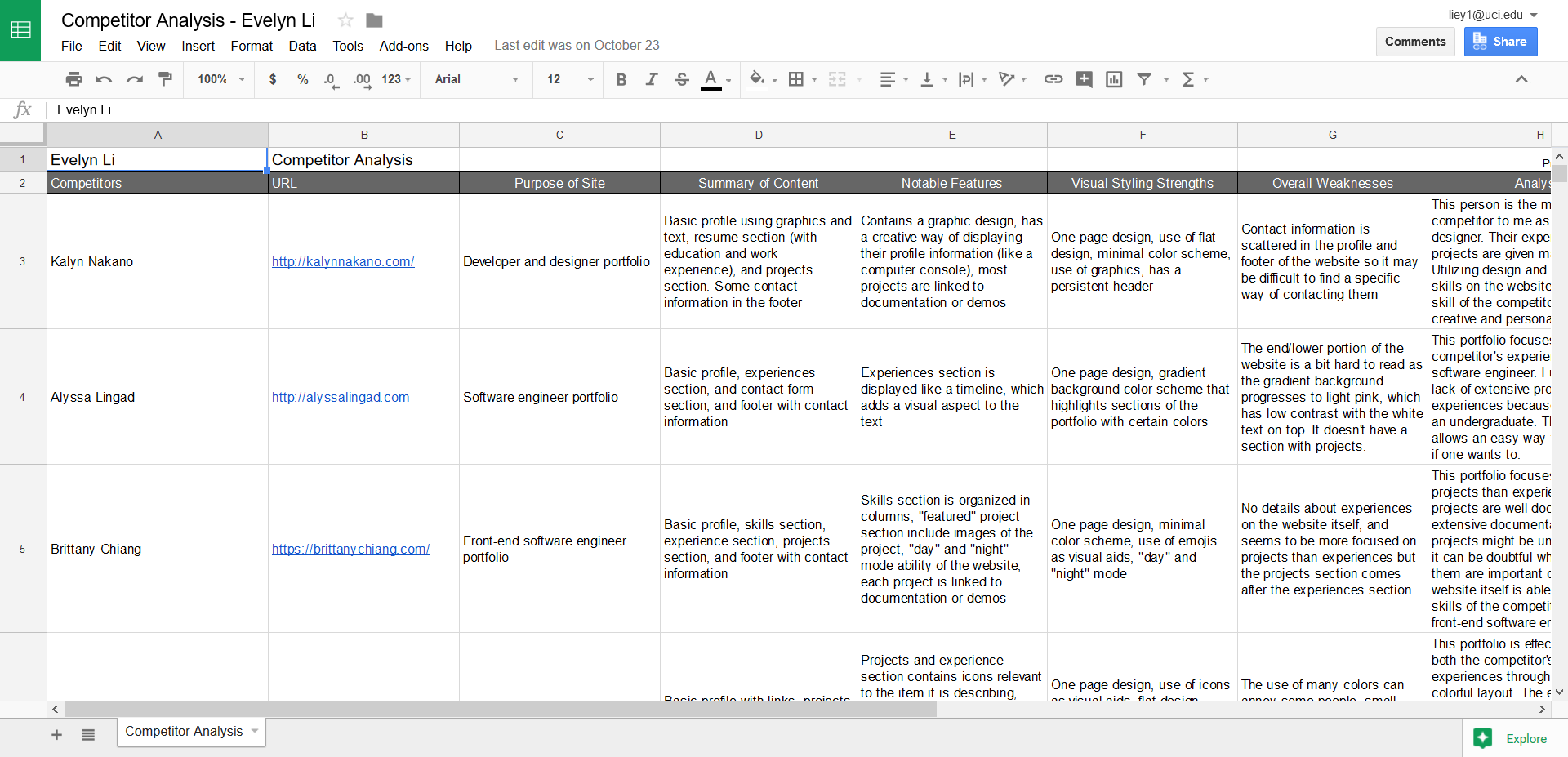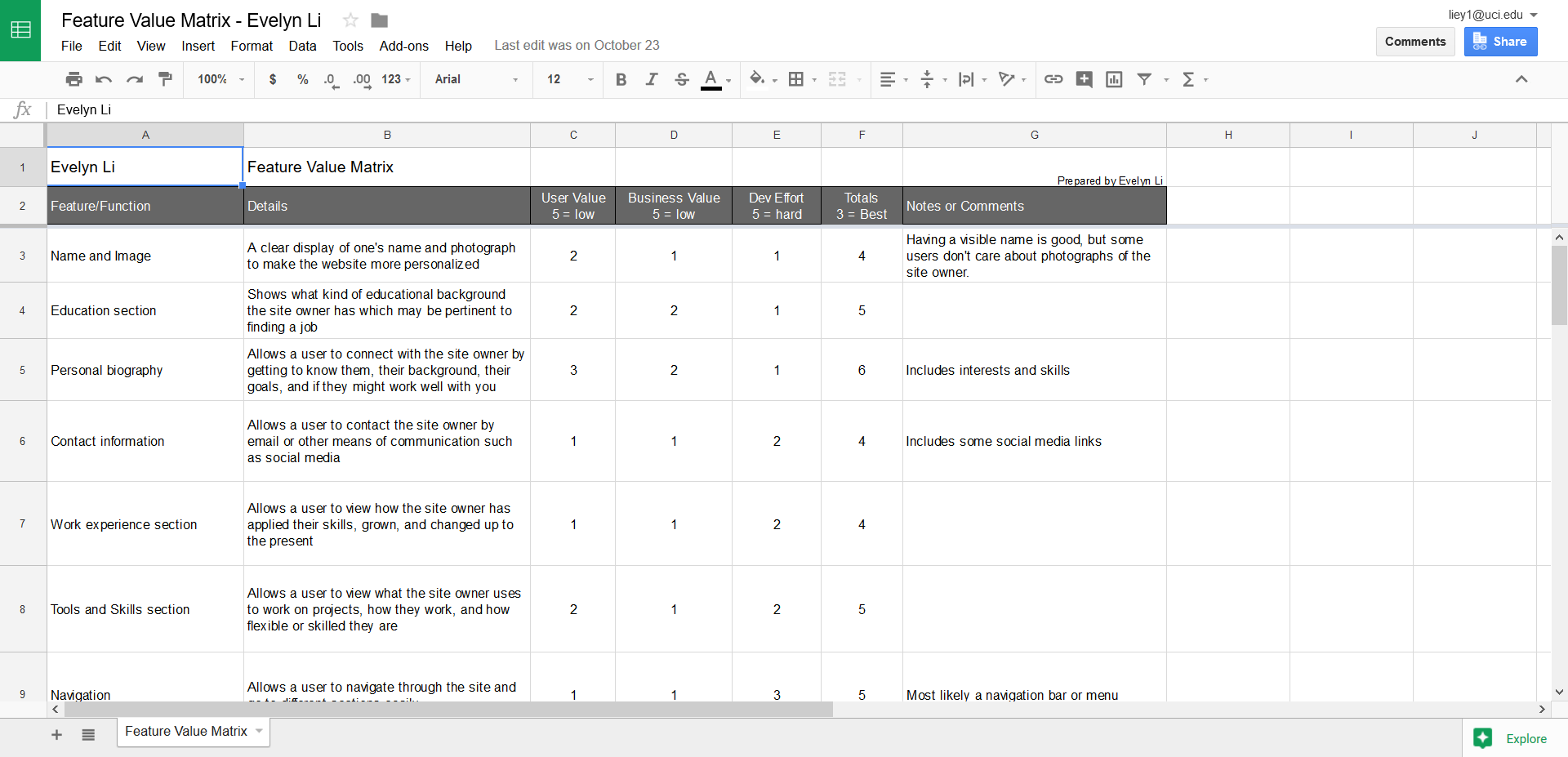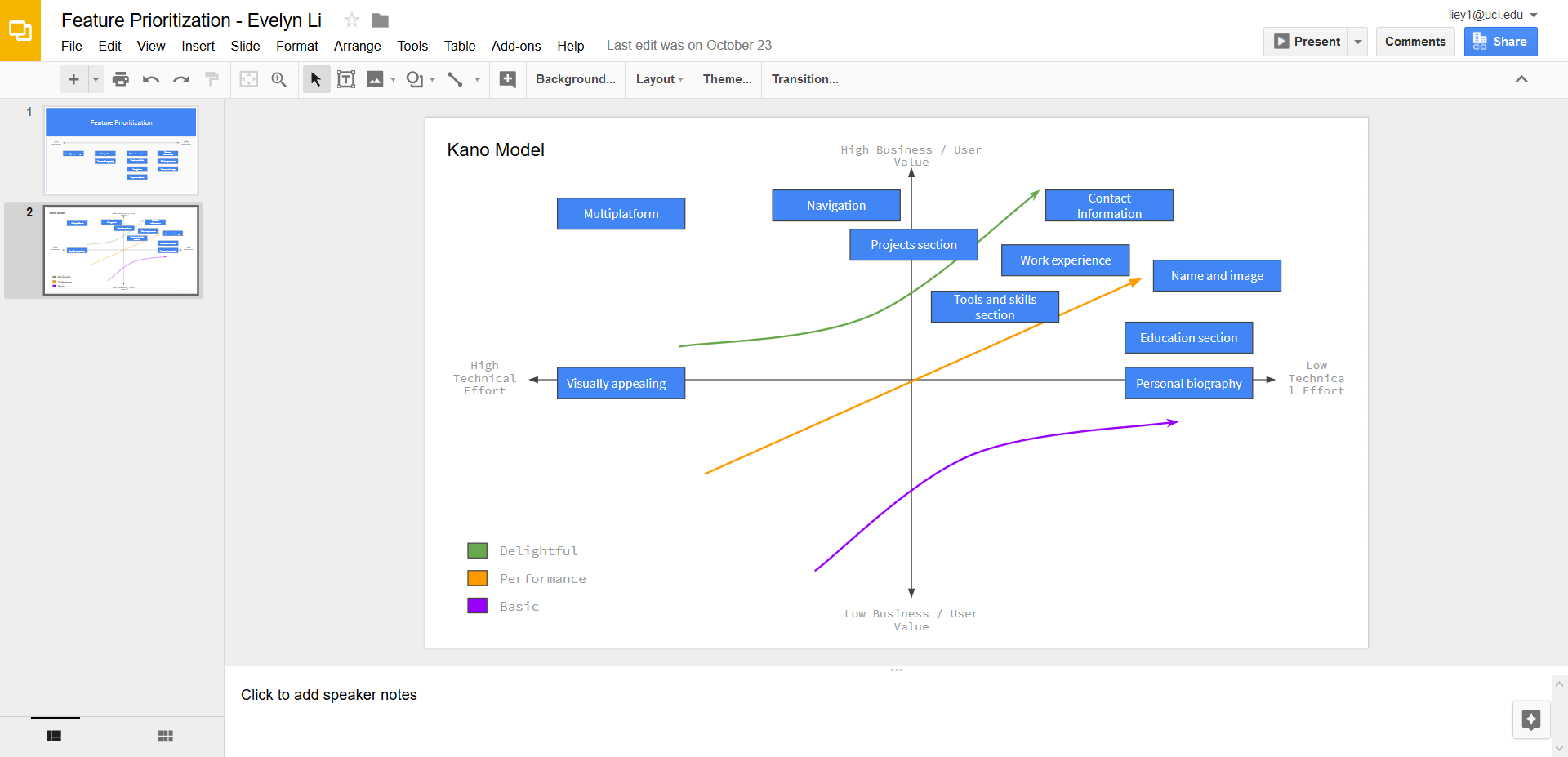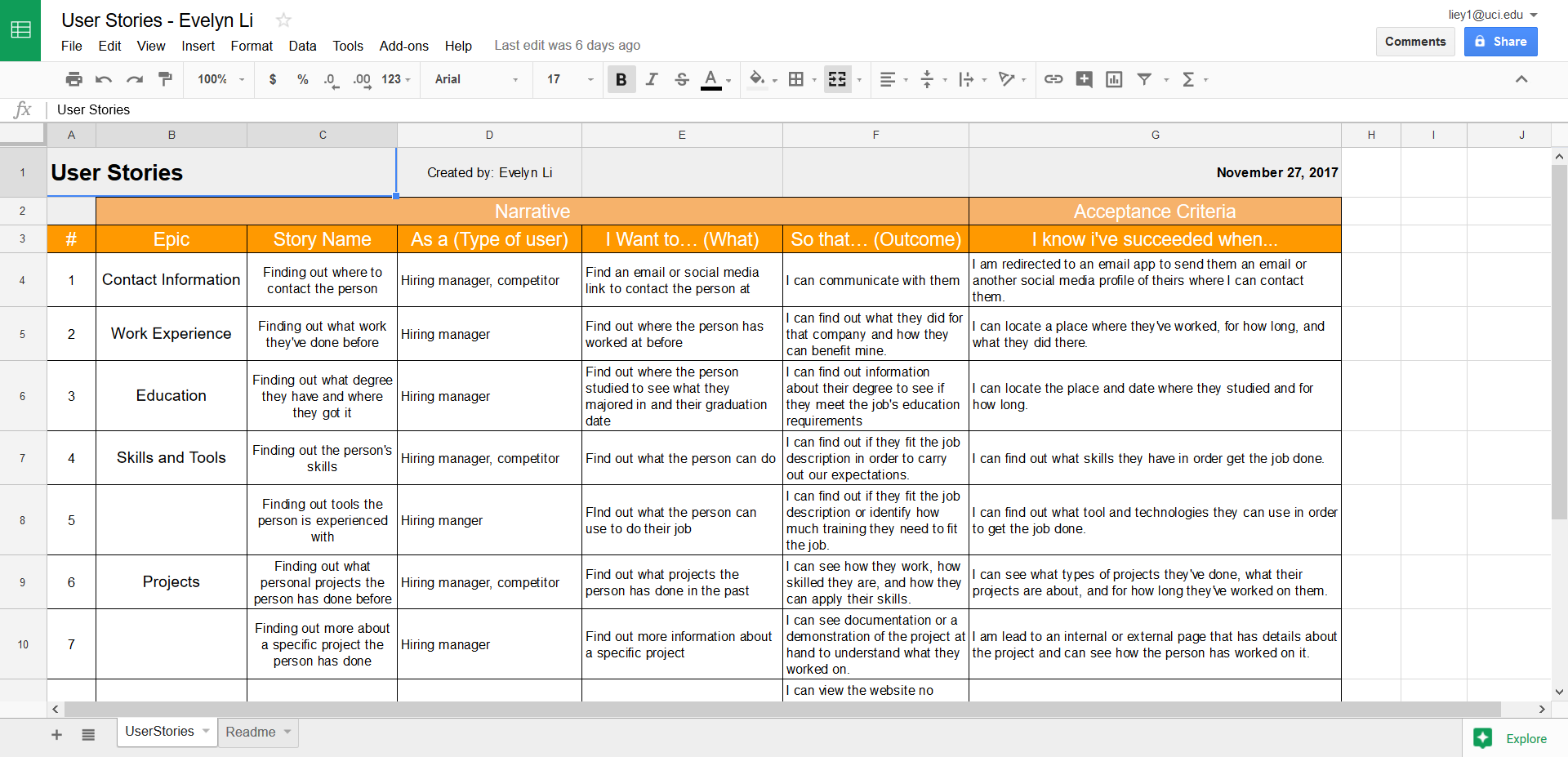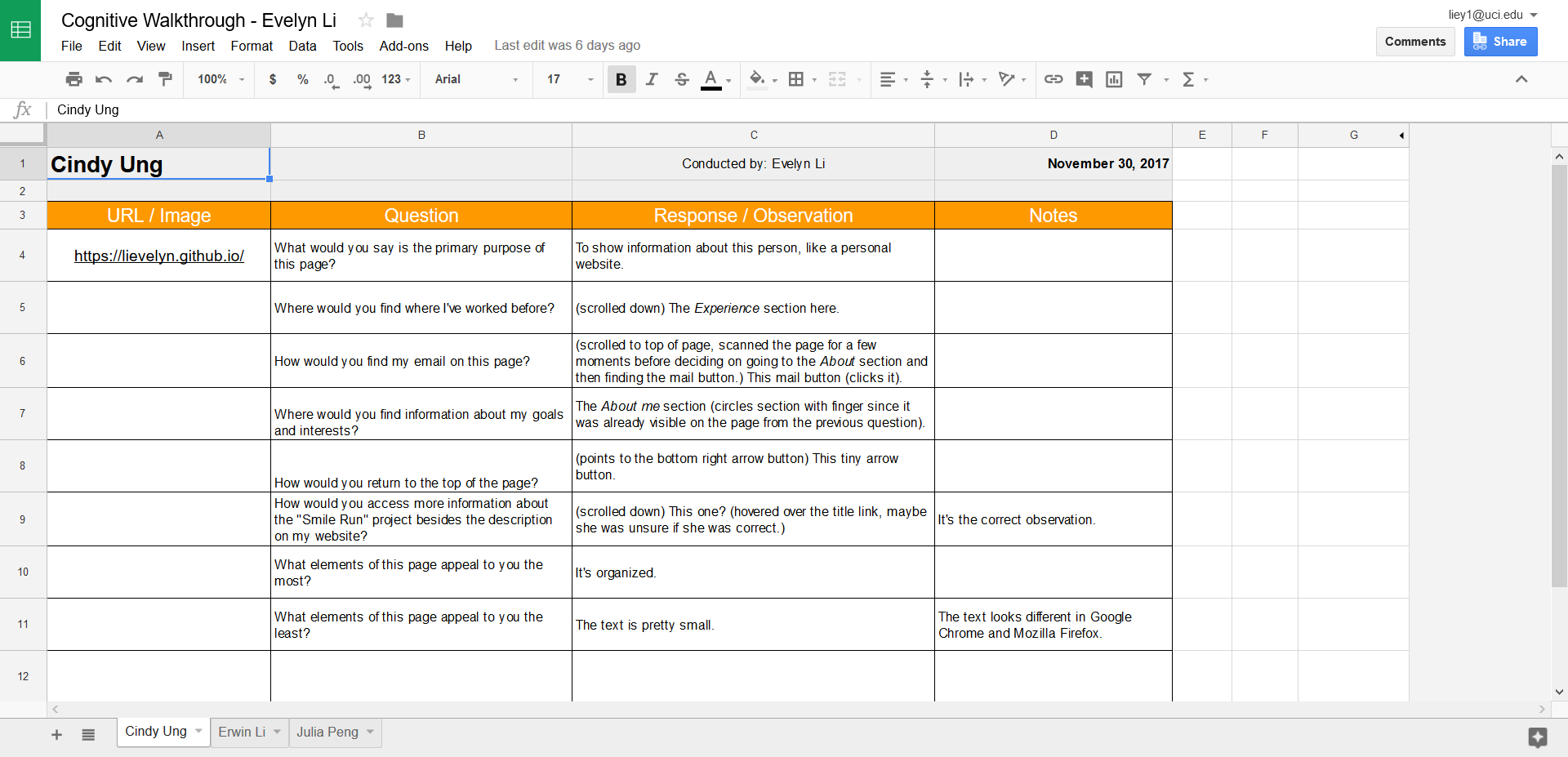User Research
User Interviews
User interviews are an important way of getting direct opinions from potential users of the portfolio website to see what they find important in the end product. Questions I asked during the interview were mostly about what features users wanted to see and about their opinion on possible content and design decisions.
Competitor Analysis
A competitor analysis is used to find and analyse competitors in the same field as the developer or designer and seeing the strengths and weaknesses of other competitors' portfolio websites. I reviewed both software developers and designers because I am mainly aiming for a career in software development but I am interested in learning more about design careers since I have experience in it.
Feature Value Matrix
A feature value matrix helps a designer to determine how important the features they want in the project are by assessing the business value and user value of the features, and how easily they can be implemented in the project so that it can be finished within time constraints. I chose the features in my feature value matrix according to what I thought was interesting from competitors' portfolios and what users thought were important from user interviews.

